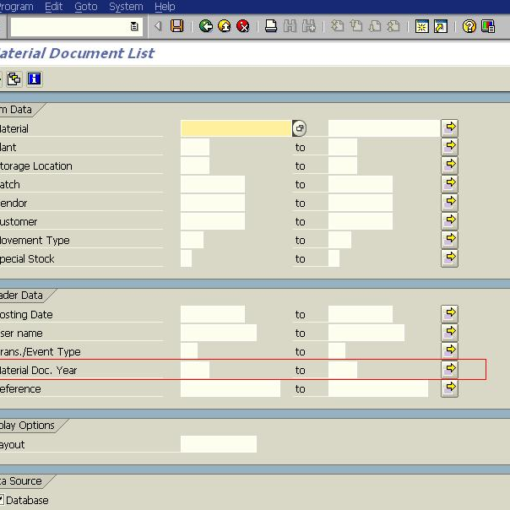
SAP Data Analytics is a comprehensive suite of tools and technologies designed to process, analyze, and derive actionable insights from vast datasets. In a world where data is abundant, organizations are increasingly turning to data analytics to gain a competitive edge. SAP Data Analytics facilitates this process by providing robust solutions that cater to the diverse needs of businesses.
In the ever-evolving landscape of business intelligence, SAP Data Analytics has emerged as a transformative force, empowering organizations to harness the full potential of their data. This article provides an in-depth exploration of what Data Analytics is, its key components, advantages, implementation, and its pivotal role in shaping the future of business decision-making.
Key Components of SAP Data Analytics
At its core, SAP Data Analytics comprises key components such as SAP HANA, SAP BW/4HANA, and SAP Analytics Cloud. Each of these components plays a unique role in facilitating efficient data processing, storage, and visualization. SAP HANA, for instance, enables real-time data processing, ensuring that decision-makers have access to the most up-to-date information.
- SAP HANA Cloud: A database as a service that allows users to build data solutions with cloud-native scalability, speed, and performance
- SAP Datasphere: A cloud-based solution that provides organizations with the flexibility, scalability, and agility they need to handle their data warehousing needs
- SAP S/4HANA Embedded Analytics: Provides instant insights on live data without data redundancy or any latencies
- SAP Data Intelligence: Integrates with SAP HANA Cloud and uses an internal data lake to store non-SAP data
- SAP Business Analytics Ecosystem: Based on Business Intelligence (BI), Artificial Intelligence (AI) and Machine Learning, it allows for the data analysis of past and current events as well as the simulation of future scenarios
- SAP Data Quality Management software: Enables you to detect and correct master data errors and inconsistencies
- SAP Analytics Cloud mobile app: Allows users to access stories and dashboards from their mobile device rather than desktop or laptop
Advantages of SAP Data Analytics
The advantages of implementing Data Analytics are manifold. From real-time data processing to improved decision-making and enhanced business intelligence, organizations stand to gain a competitive edge by harnessing the power of data analytics. The ability to extract meaningful insights from complex datasets is a game-changer in today’s data-driven business landscape.
Implementation of SAP Data Analytics
Implementing Data Analytics involves a meticulous integration process. While the benefits are substantial, organizations often face challenges during the implementation phase. Common challenges include data quality issues and the need for comprehensive training. However, with careful planning and the right solutions, these challenges can be overcome.
Use Cases and Applications
The applications of SAP Data Analytics span across various industries and business scenarios. From optimizing supply chain processes to enhancing customer experiences, organizations can leverage Data Analytics for tailored solutions. Industry-specific use cases showcase the versatility and adaptability of this analytics powerhouse.
SAP Data Analytics vs. Traditional Analytics
A crucial aspect of SAP Data Analytics is its performance and efficiency when compared to traditional analytics approaches. The scalability and adaptability of Data Analytics make it a preferred choice for organizations dealing with large and dynamic datasets. The shift towards a more dynamic and virtualized approach to data management is evident in the outperformance of Data Analytics.
Security Measures in SAP Data Analytics
In an era where data security is paramount, Data Analytics doesn’t fall short. Robust security measures, including data encryption and meticulous access controls, ensure that sensitive information is protected. User permissions add an additional layer of security, guaranteeing that only authorized individuals have access to specific datasets.
Future Trends in SAP Data Analytics
Looking ahead, the future of Data Analytics involves integration with artificial intelligence (AI) and machine learning. The synergy between data analytics and emerging technologies is poised to revolutionize how organizations derive insights from their data. The continuous evolution of Data Analytics aligns with the ever-changing technological landscape.
Training and Certification for SAP Data Analytics
Continuous learning is essential for organizations to maximize the benefits of Data Analytics. Training programs and certification courses empower professionals to stay updated on the latest features and functionalities. With a plethora of resources available, organizations can ensure that their teams are well-equipped to harness the full potential of Data Analytics.
Success Stories in Data Analytics
Real-world success stories highlight the transformative impact of Data Analytics. Organizations across industries have witnessed positive outcomes, from streamlined processes to data-driven decision-making. These success stories serve as inspiration for others considering the implementation of Data Analytics.
Common Challenges
While the benefits of Data Analytics are substantial, organizations may encounter common challenges, including data quality issues and the need for comprehensive training. Recognizing these challenges is the first step towards overcoming them, and with the right strategies, organizations can ensure a smooth implementation and utilization of Data Analytics.
Tips for Optimizing
Optimizing It involves regular software updates, utilization of advanced features, and the incorporation of feedback loops. By staying current with the latest features and continuously improving processes based on feedback, organizations can enhance the efficiency of Data Analytics.
Conclusion
A. Recap of Key Points
It emerges as a powerful tool for organizations seeking real-time insights and data-driven decision-making. From key components to implementation best practices, understanding the intricacies ensures successful integration.
B. Future Outlook
As technology evolves, the future of Data Analytics holds exciting possibilities. Integration with AI, predictive analytics advancements, and evolving reporting capabilities promise continued innovation in the analytics landscape.
FAQs
- Is SAP Data Analytics only for large enterprises? No, SAP Data Analytics solutions cater to businesses of all sizes, offering scalable options to meet diverse organizational needs.
- Is it exclusively for IT departments? No, It is designed for the entire organization. User-friendly interfaces make it accessible to individuals across various departments.
- How complex is the implementation process of Data Analytics? While challenges exist, with proper planning, training, and support, organizations can navigate the implementation smoothly.
- What security measures are in place for Data Analytics? Security measures include encryption, access controls, regular security audits, and compliance with data protection laws.
- What role do data analysts play in Data Analytics? Data analysts play a crucial role in driving insights, requiring skills in data analysis tools, statistical methods, and effective collaboration with other departments.
You may be interested in:
SAP Analytics Cloud Development Demystified
SAP Application Development: Unlocking Business Potential
SAP S4 Hana Interview Questions
The Impact of SAP Analytics: Leveraging Data for Business Insights




